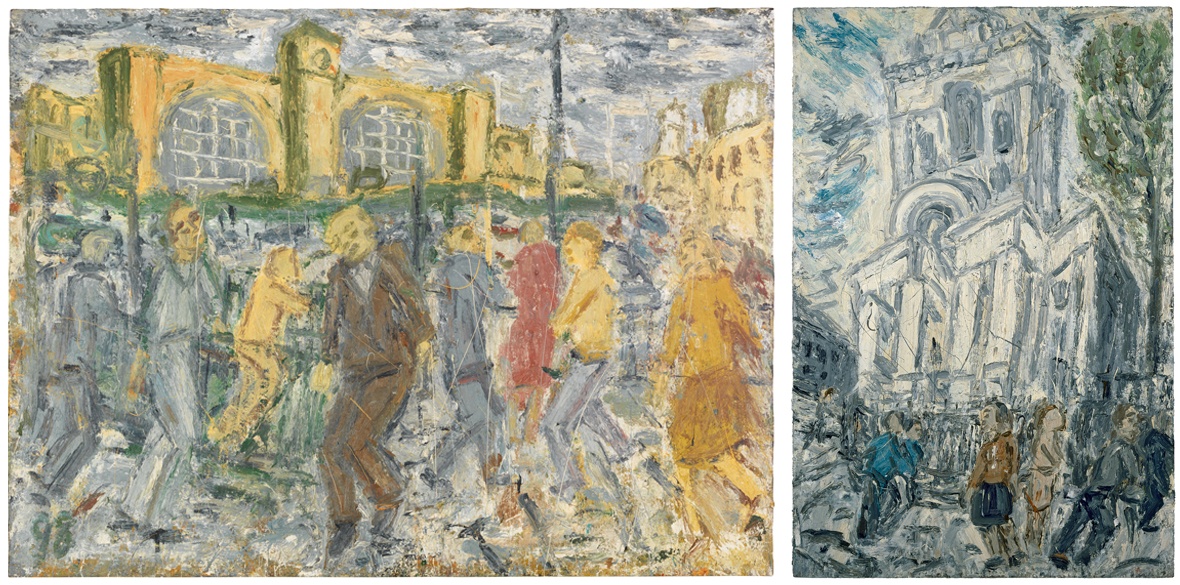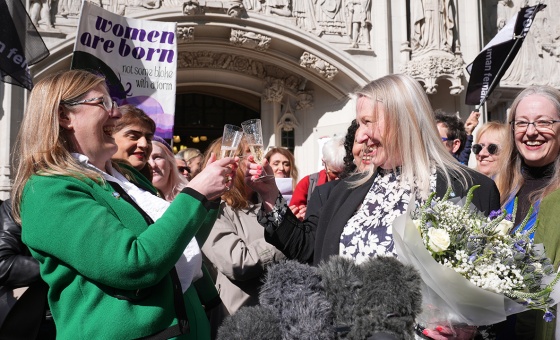This is the last article you can read this month
You can read more article this month
You can read more articles this month
Sorry your limit is up for this month
Reset on:
Please help support the Morning Star by subscribing here
Leon Kossoff: A Life in Painting
Annely Juda Fine Art, London
EVER the outsider Leon Kossoff (1926 - 2019) doggedly pursued his own truth, stubbornly refusing to divorce his work from observations of urban life throughout his long career.
Yet from the mid-1950s to the mid-1960s when he was establishing himself as a serious artist, the dominant aesthetic dismissed such subject matter as out-dated, rooted in the 19th century and now fit only for amateurs.
Abstract Expressionism was followed by dispassionate, flatly painted geometric abstraction and pop art’s slyly knowing figuration. It was not until the1980s that leading Western critical opinion once again hailed a return to realism. In fact, of course realism never died.
It is no coincidence that Kossoff chose to depict life near his various homes or studios, in east and north London’s pre-gentrified, working-class districts of Spitafields, Kings Cross, Hackney’s Dalston Junction, Kilburn and Willesden, in all of which first generation immigrants abounded.
The second of seven children born to a Russian-Jewish master baker and a Ukrainian-Jewish mother, he grew up in Shoreditch and Brick Lane in London’s East End, where the bourgeoisie rarely ventured. His father Wolf Kossoff was active in Jewish left-wing, intellectual circles so the young Leon Kossoff was no stranger to this rich cultural and political ambiance. Without being overly didactic his paintings are imbued with his innate working-class consciousness.
He wedded the traditional subject of urban life with an original handling of the traditional medium of oil painting. With the paint thickly laid on with broad brushes or swept across the supporting board with a palette knife, the apparently clumsily drawn motifs gradually reveal themselves to be acutely and accurately observed.
In Booking Hall, Kilburn Underground Station No2 of 1977, an elderly man clutching a briefcase stoops, shoulders high as he steps hesitantly across the station’s booking hall, while a young woman steps forward confidently nearby. People mingle yet are self contained — experienced city dwellers intent on keeping their own counsel among crowds.
A sensitivity to the cacophony of city life permeates Kossoff’s paintings. Children’s joyous screeches echoes in a crowed swimming pool, trains rattle towards stations, labourers’ shouts compete with thudding mechanical diggers in cavernous building sites.
Figures emerge from the squishy, malleable and sometimes treacherous paint which nevertheless retains its material presence, so that the paintings manage to exist as both representational and seemingly “abstract.”
Paint is lavished so extravagantly onto inexpensive board and slapped around its edges that the wobbly, wavy edges create a visual uncertainty which contradicts the thick paint’s evident solidity which has a sculptural physicality.
And hardboard is a utilitarian, more uncompromising and less forgiving surface to work on than the more pleasurable “bounce” of taunt canvas when touched by paint laden brushes. Hardboard is also cheaper, which is why it is a favourite of art students.
A similar quality of preceding and impeding change characterises the drawing of the buildings and figures which populate his works. Nothing is stable, nothing remains the same. Such contradictions form the essence of his work. He spoke of never finishing a picture “without first experiencing a huge emptying of all factual and topographical knowledge.” The subject is transformed into a painting’s own independent existence.
What makes Kossoff’s work so rich is its multivalence. At first glance the paintings appear to consist of a mass of agitated, swirling glutinous paint conveying abstract expressionist angst, in which “neutral” browns, beiges and greys dominate. But flashes of vermillion, cerulean blue and yellow ochre burst through. Then a figure emerges, then another and buildings too, all resonant of the richness and flux of city life.
From unglamorous, unfashionable places and people he found endless stimulation and possibilities from which to convey the truth and realities of quotidian life. As he said in a rare statement “Perhaps everything is beautiful.”
Cultivating a child’s sense of awe, his deceptively almost child-like depictions of sharply observed urban life in arrested movement, as in a film still, imply previous and impeding movement.
These are paintings which continue to give and give the longer one spends with them. Kossoff is a painter’s painter, like Paul Cezanne or Nicolas Poussin, both of whom were among his favourite and most influential artists.
Without fanfare and with deliberately rare verbal explanations, Kossoff addressed the aesthetic preoccupations and debates of his youth when abstraction and representation were seen as opponents.
He reconciled them while allowing each to retain its own identity. No mean feat. And in an age when colour reproductions became ubiquitous, he stressed the importance of primary experience by creating works which resolutely defy reproduction.
By looking intensely out at the quotidian world rather than dwelling on his inner states of mind, he conveyed a passionate and humane curiosity about his fellow beings.
Andrea Rose’s copiously illustrated Catalogue Raisonne of the Oil Paintings provides serious, informative and well researched texts and chronology.
This important, free exhibition of 58 works derived from the Leon Kossoff’s estate begins at Annely Juda’s Gallery, London before touring to New York and Los Angeles. Beautifully hung in well-lit rooms, it is the equal of many a paying museum exhibition.
Not to be missed.
Until December 4 2021. Free — no booking required.











